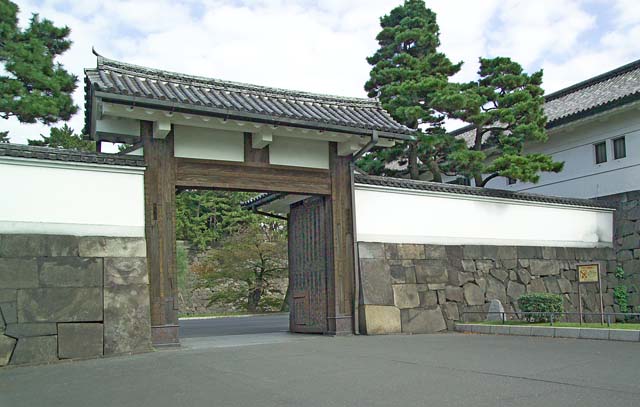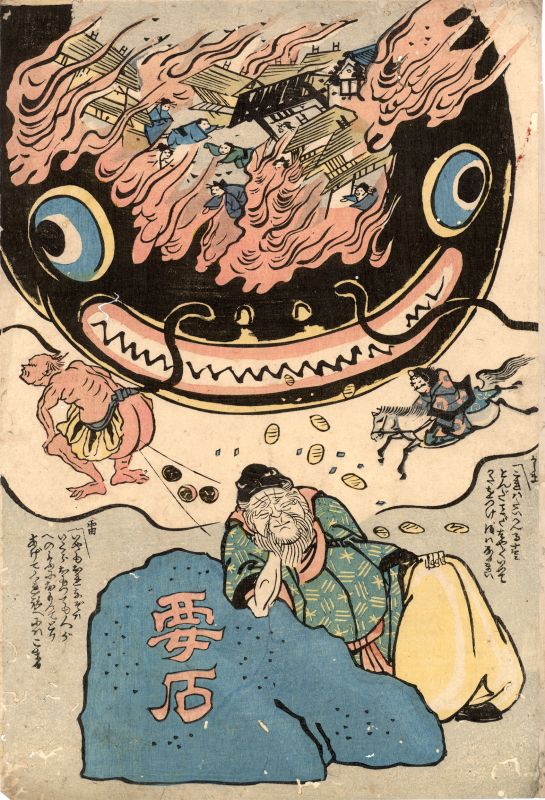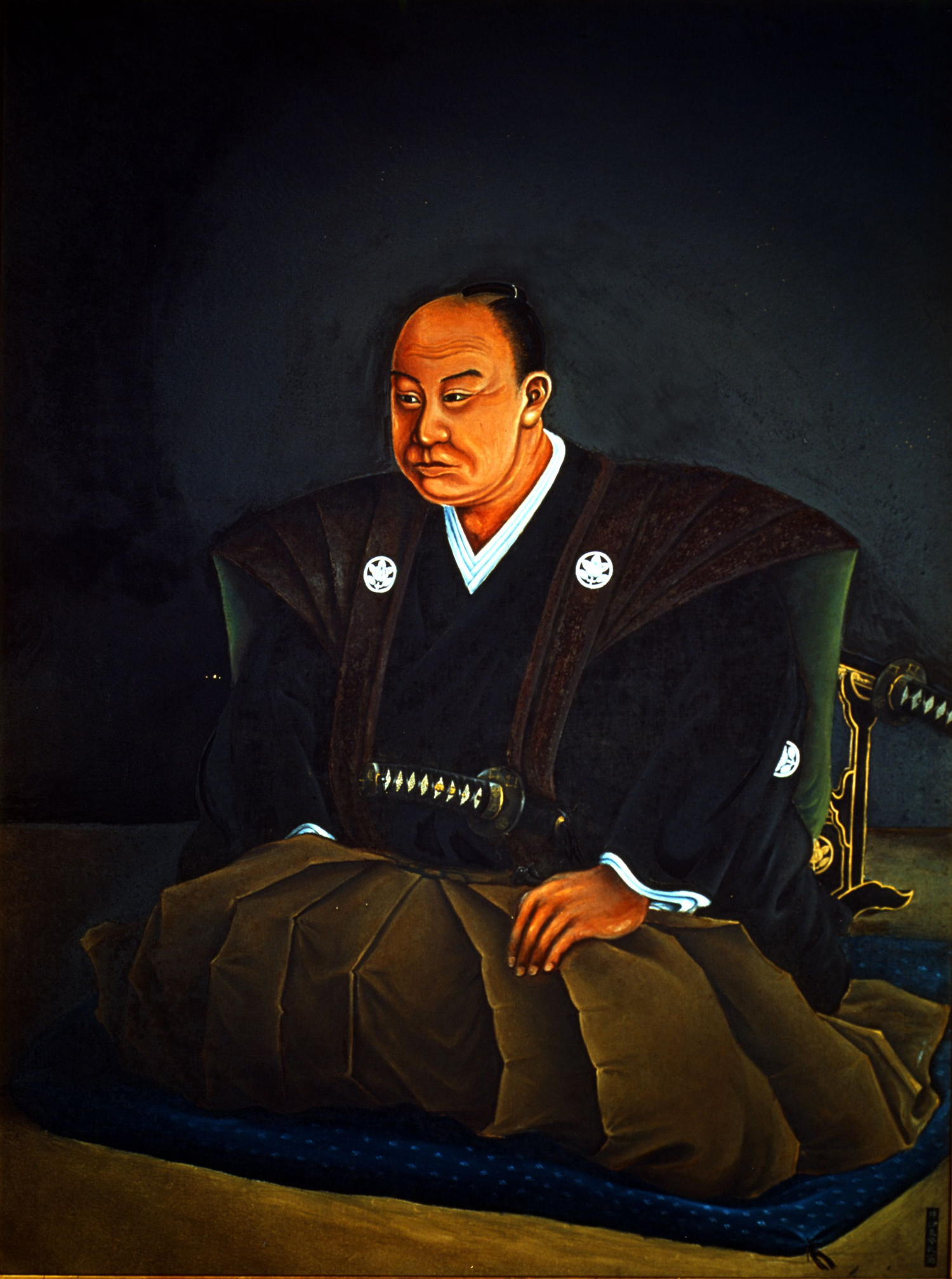|
Ansei
was a after '' Kaei'' and before '' Man'en''. This period spanned the years from November 1854 through March 1860. The reigning emperor was . Change of era * November 27, 1854 (): The new era name of ''Ansei'' (meaning "tranquil government") was created to herald the beginning of a peaceful period. The impetus and explanation for this change of era names was said to have been the burning of the Palace in Kyoto in the preceding summer.Satow, Ernest Mason. (1905) ''Japan 1853–1864, Or, Genji Yume Monogatari'', p. 11./ref> The new era name was derived from an hortatory aphorism: "Rule peacefully over the masses, then the ruler will remain in his place" (庶民安政、然後君子安位矣). Although the notion seems appealing, the arrival of the Black Ships and Commodore Matthew C. Perry is not specifically recognized as a factor in the change of era names. Events of the ''Ansei'' era * 1854 (''Ansei 1''): The Ansei-Tōkai Quake (安政東海地震, ''Ansei Tōkai J ... [...More Info...] [...Related Items...] OR: [Wikipedia] [Google] [Baidu] |
1855 Edo Earthquake
The , was the third Ansei Great Earthquake, which occurred during the late-Edo period. It occurred after the 1854 Nankai earthquake, which took place about a year prior. The earthquake occurred at 22:00 local time on 11 November. It had an epicenter close to Edo (now Tokyo), causing considerable damage in the Kantō region from the shaking and subsequent fires, with a death toll of 7,000–10,000 people and destroyed around 14,000 buildings. The earthquake had a magnitude of 7.0 on the surface wave magnitude scale and reached a maximum intensity of XI (''Extreme'') on the Mercalli intensity scale. The earthquake triggered a minor tsunami. Tectonic setting The Kanto area lies above a complex part of the convergent boundaries between the subducting Pacific and Philippine Sea Plates and the overriding Eurasian and North American Plates. Earthquakes with epicenters in the Kantō region may occur within the Eurasian Plate, at the Eurasian Plate/Philippine Sea Plate interface, withi ... [...More Info...] [...Related Items...] OR: [Wikipedia] [Google] [Baidu] |
Ansei Great Earthquakes
The Ansei great earthquakes (安政の大地震, ''Ansei no Dai Jishin'') were a series of major earthquakes that struck Japan during the Ansei era (1854–1860): * The Ansei Tōkai quake ( ja, 安政東海地震, Ansei Tōkai Jishin, label=none) was an 8.4 magnitude earthquake which struck on December 23, 1854. The epicenter ranged from Suruga Bay to the deep ocean, and struck primarily in the Tōkai region, but destroyed houses as far away as in Edo. The subsequent tsunami caused damage along the entire coast from the Bōsō Peninsula in modern-day Chiba prefecture to Tosa province (modern-day Kōchi Prefecture)_____. (2007). in , p. 253. * The Ansei Nankai quake ( ja, 安政南海地震, Ansei Nankai Jishin, label=none) was an 8.4 magnitude earthquake which struck on December 24, 1854. Over 10,000 people from the Tōkai region down to Kyushu were killed. * The ( ja, 豊予海峡地震, Hōyo Kaikyō Jishin, label=none) was an M7.4 intra-plate earthquake in Hōyo Strait af ... [...More Info...] [...Related Items...] OR: [Wikipedia] [Google] [Baidu] |
Ansei Purge
was a multi-year event in Japanese history of the Edo period between 1858 and 1860, during which the Tokugawa shogunate imprisoned, executed, or exiled those who did not support its authority and foreign trade policies. The purge was undertaken by Ii Naosuke in opposition to Imperial Loyalists. History The Ansei Purge was ordered by Ii Naosuke on behalf of the bakufu faction.Cullen, Louis. (2003). ''A History of Japan, 1582–1941: Internal and External Worlds'', pp. 184–188. He was the Senior Minister during the period preceding the Meiji Restoration and was part of the '' kōbu gattai'', the movement opposed by the Revere the Emperor, Expel the Foreigner (''sonnō jōi'') faction. The purge was carried out in an effort to quell opposition to trade treaties with the United States, Russia, Great Britain, France and the Netherlands, particularly under the U.S. - Japan Treaty of Amity and Commerce. It involved the removal from power all opposition by way of imprisonment, torture ... [...More Info...] [...Related Items...] OR: [Wikipedia] [Google] [Baidu] |
Ii Naosuke
was '' daimyō'' of Hikone (1850–1860) and also Tairō of the Tokugawa shogunate, Japan, a position he held from April 23, 1858, until his death, assassinated in the Sakuradamon Incident on March 24, 1860. He is most famous for signing the Harris Treaty with the United States, granting access to ports for trade to American merchants and seamen and extraterritoriality to American citizens. He was also an enthusiastic and accomplished practitioner of the Japanese tea ceremony, in the Sekishūryū style, and his writings include at least two works on the tea ceremony. Under Ii Naosuke’s guidance, the Tokugawa shogunate navigated past a particularly difficult conflict over the succession to the ailing and childless Tokugawa Iesada. Ii Naosuke managed to coerce the Tokugawa shogunate to the last brief resurgence of its power and position in Japanese society before the start of the Meiji period. Ii was assassinated in the Sakuradamon incident by a group of 17 Mito and 1 ... [...More Info...] [...Related Items...] OR: [Wikipedia] [Google] [Baidu] |
1854 Ansei-Nankai Earthquake
The 1854 Nankai earthquake occurred at about 16:00 local time on 24 December. It had a magnitude of 8.4 and caused a damaging tsunami. More than 30,000 buildings were destroyed and there were at least 3,000 casualties. It was the second of the three Ansei great earthquakes; the 1854 Tōkai earthquake of identical magnitude had hit northwest the previous morning, and the third 1855 Edo earthquake would strike less than a year later. Background The southern coast of Honshu runs parallel to the Nankai Trough, which marks the subduction of the Philippine Sea Plate beneath the Eurasian Plate. Movement on this convergent plate boundary leads to many earthquakes, some of them of the megathrust type. The Nankai megathrust has five distinct segments (A–E) that can rupture independently, the segments have ruptured either singly or together repeatedly over the last 1300 years. Megathrust earthquakes on this structure tend to occur in pairs, with a relatively short time gap between them ... [...More Info...] [...Related Items...] OR: [Wikipedia] [Google] [Baidu] |
Kaei
was a after ''Kōka'' and before '' Ansei''. This period spanned the years from February 1848 through November 1854. The reigning emperor was . Change of era * February 28, 1848 : The era name of ''Kaei'' (meaning "eternal felicity")Satow, Ernest Mason. (1905) ''Japan 1853-1864, Or, Genji Yume Monogatari'', p. 11./ref> was created to mark the beginning of the reign of the Emperor Kōmei. The era name is derived from an aphorism in the ''Book of Song'': "A wise Emperor receives much help, One who esteems comfort is on the outside" (). Events of the ''Kaei'' Era * July 1848 (''Kaei 1''): Ranald MacDonald, (b. 1824, Astoria, Oregon) left the whaler ''Plymouth'' in a small boat and landed on Rishiri Island. He was arrested and sent from Rishiri to Nagasaki where he was incarcerated; MacDonald began teaching English to 14 scholars, including Einosuke Moriyama, who later became an interpreter for the Japanese government when Matthew C. Perry entered Japan in 1854 (thus, in Jap ... [...More Info...] [...Related Items...] OR: [Wikipedia] [Google] [Baidu] |
Man'en
was a after '' Ansei'' and before ''Bunkyū''. This period spanned the years from March 1860 through February 1861. The reigning emperor was . Change of era * March 18, 1860 (): The new era name was created to mark the destruction caused by a fire at Edo Castle and the assassination of Ii Naosuke (also known as "the disturbance" or "the incident" at the Sakurada-mon). The previous era ended and a new one commenced in ''Ansei'' 7. The new era name is derived from an hortatory aphorism to be found in '' The Book of the Later Han'': "With 100,000,000,000 descendants, your name will forever be recorded" (豊千億之子孫、歴万載而永延). Events of the ''Man'en'' era * 1860 (''Man'en 1''): First Western professional photographer to establish residence in Japan, Orrin Freeman began living in YokohamaHannavy, John. (2007). * 1860 (''Man'en 1''): First foreign mission to the United States.Press release "First Japanese Diplomatic Mission to U.S. Is Subject of May 24 Lectu ... [...More Info...] [...Related Items...] OR: [Wikipedia] [Google] [Baidu] |
Emperor Kōmei
was the 121st Emperor of Japan, according to the traditional order of succession.Imperial Household Agency (''Kunaichō'')孝明天皇 (121)/ref> Kōmei's reign spanned the years from 1846 through 1867, corresponding to the final years of the Edo period.Meyer, Eva-Maria. (1999) ''Japans Kaiserhof in der Edo-Zeit'', p. 186./ref> During his reign there was much internal turmoil as a result of Japan's first major contact with the United States, which occurred under Commodore Perry in 1853 and 1854, and the subsequent forced re-opening of Japan to western nations, ending a 220-year period of national seclusion. Emperor Kōmei did not care much for anything foreign, and he opposed opening Japan to Western powers. His reign would continue to be dominated by insurrection and partisan conflicts eventually culminating in the collapse of the Tokugawa shogunate shortly after his death and the Meiji Restoration in the beginning of the reign of his son and successor Emperor Meiji. Ea ... [...More Info...] [...Related Items...] OR: [Wikipedia] [Google] [Baidu] |
1858 Hietsu Earthquake
The was a doublet earthquake that took place on April 9, 1858 (according to the old Japanese calendar, February 26, Ansei 5). It most likely occurred on the Atotsugawa and Miboro faults, which connect the Amō Pass in Gifu Prefecture (in the part that was called Hida Province) and Mount Tate in Toyama Prefecture (then known as Etchū Province) on the island of Honshū in Japan. Its name includes one kanji from and one from . The earthquakes are estimated to have killed 200–300 people. It also caused the Mount Tonbiyama landslide and blocked the upper reaches of the Jōganji River. See also * Ansei great earthquakes *List of earthquakes in Japan *List of historical earthquakes References External links飛越地震(岐阜県防災局)(''Hietsu jishin (Gifu-ken Bōsaikyoku)''), Gifu Prefecture飛越地震による大鳶山、小鳶山の大崩壊—災害伝承情報データベース(''Hietsu jishin ni yoru Ōtonbi-yama, Kotonbi-yama no dai hōkai—Saigai denshō j ... [...More Info...] [...Related Items...] OR: [Wikipedia] [Google] [Baidu] |
Japanese Era Name
The , also known as , is the first of the two elements that identify years in the Japanese era calendar scheme. The second element is a number which indicates the year number within the era (with the first year being ""), followed by the literal "" meaning "year". Era names originated in 140 BCE in China, during the reign of the Emperor Wu of Han. As elsewhere in East Asia, the use of era names was originally derived from Chinese imperial practice, although the Japanese system is independent of the Chinese, Korean, and Vietnamese era-naming systems. Unlike these other similar systems, Japanese era names are still in use. Government offices usually require era names and years for official papers. The five era names used since the end of the Edo period in 1868 can be abbreviated by taking the first letter of their romanized names. For example, S55 means Shōwa 55 (i.e. 1980), and H22 stands for Heisei 22 (2010). At 62 years and 2 weeks, Shōwa is the longest era to date. The ... [...More Info...] [...Related Items...] OR: [Wikipedia] [Google] [Baidu] |
Edo Castle
is a flatland castle that was built in 1457 by Ōta Dōkan in Edo, Toshima District, Musashi Province. In modern times it is part of the Tokyo Imperial Palace in Chiyoda, Tokyo and is therefore also known as . Tokugawa Ieyasu established the Tokugawa shogunate there, and it was the residence of the ''shōgun'' and the headquarters of the military government during the Edo period (1603-1867) in Japanese history. After the resignation of the ''shōgun'' and the Meiji Restoration, it became the Tokyo Imperial Palace. Some moats, walls and ramparts of the castle survive to this day. However, the grounds were more extensive during the Edo period, with Tokyo Station and the Marunouchi section of the city lying within the outermost moat. It also encompassed Kitanomaru Park, the Nippon Budokan Hall and other current landmarks of the surrounding area. History The warrior Edo Shigetsugu built his residence in what is now the ''Honmaru'' and ''Ninomaru'' part of Edo Castl ... [...More Info...] [...Related Items...] OR: [Wikipedia] [Google] [Baidu] |
Tsunami
A tsunami ( ; from ja, 津波, lit=harbour wave, ) is a series of waves in a water body caused by the displacement of a large volume of water, generally in an ocean or a large lake. Earthquakes, volcanic eruptions and other underwater explosions (including detonations, landslides, glacier calvings, meteorite impacts and other disturbances) above or below water all have the potential to generate a tsunami. Unlike normal ocean waves, which are generated by wind, or tides, which are in turn generated by the gravitational pull of the Moon and the Sun, a tsunami is generated by the displacement of water from a large event. Tsunami waves do not resemble normal undersea currents or sea waves because their wavelength is far longer. Rather than appearing as a breaking wave, a tsunami may instead initially resemble a rapidly rising tide. For this reason, it is often referred to as a tidal wave, although this usage is not favoured by the scientific community because it mig ... [...More Info...] [...Related Items...] OR: [Wikipedia] [Google] [Baidu] |






